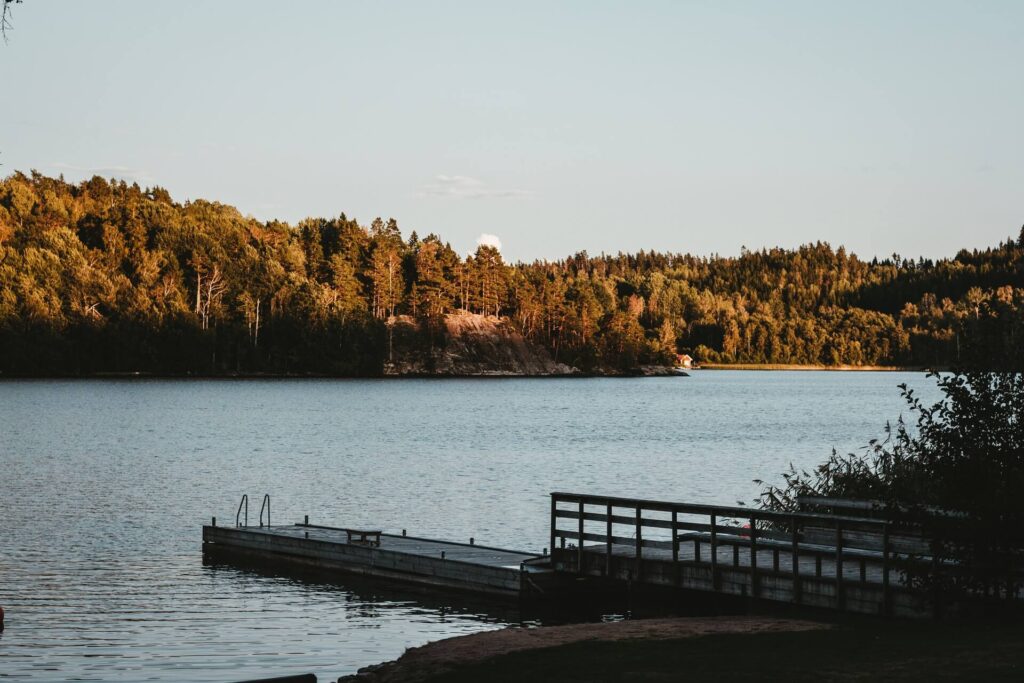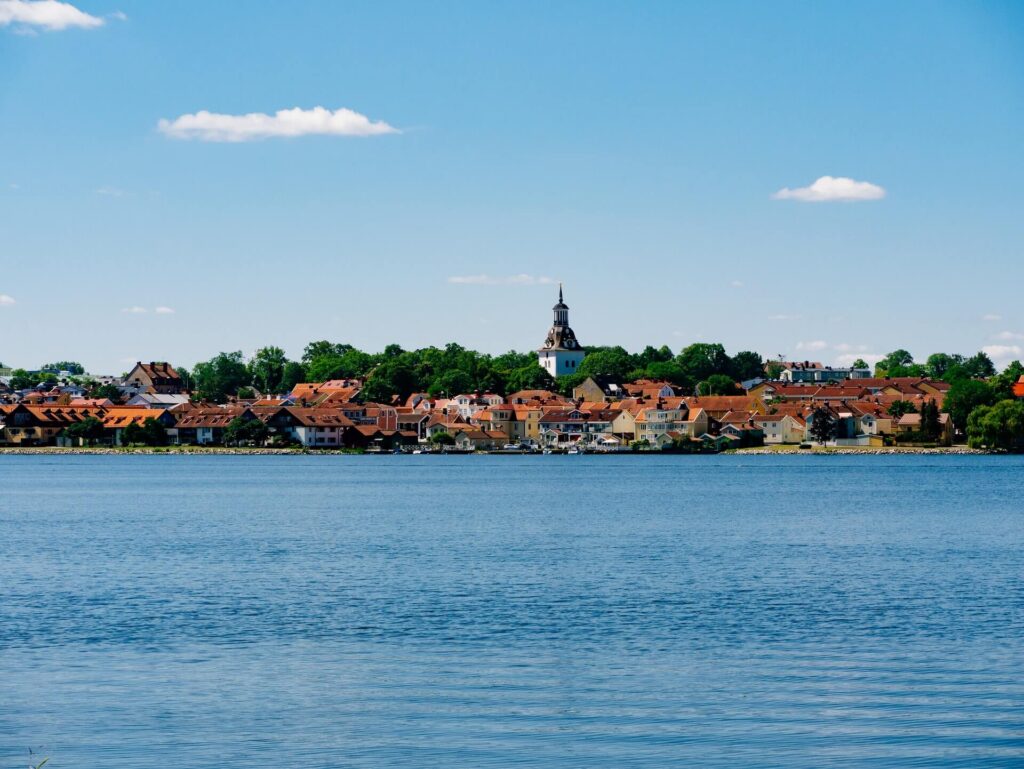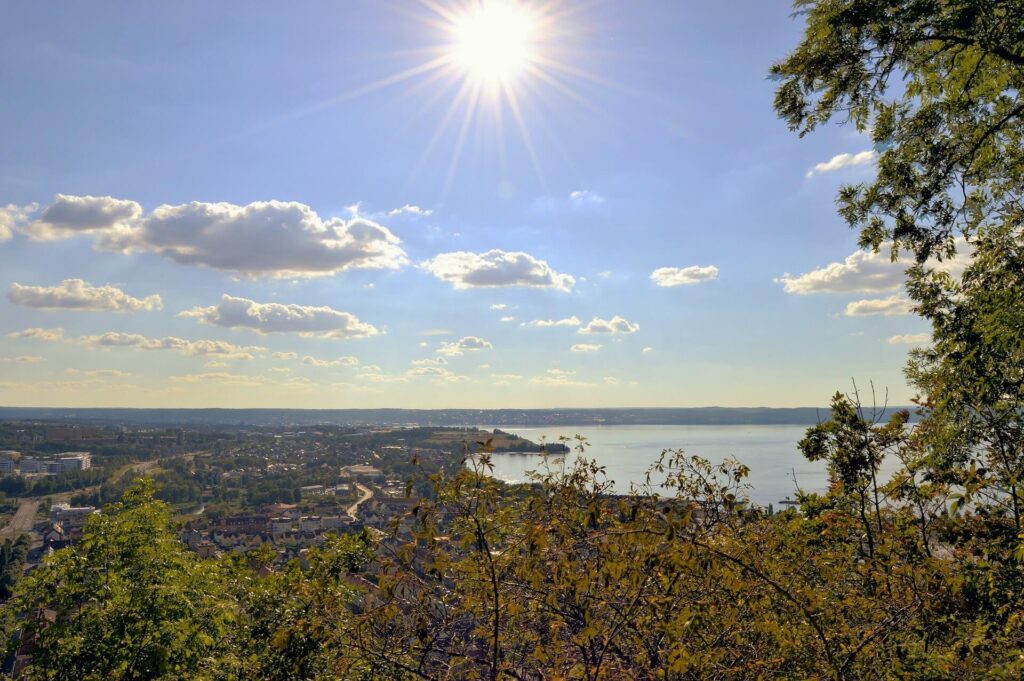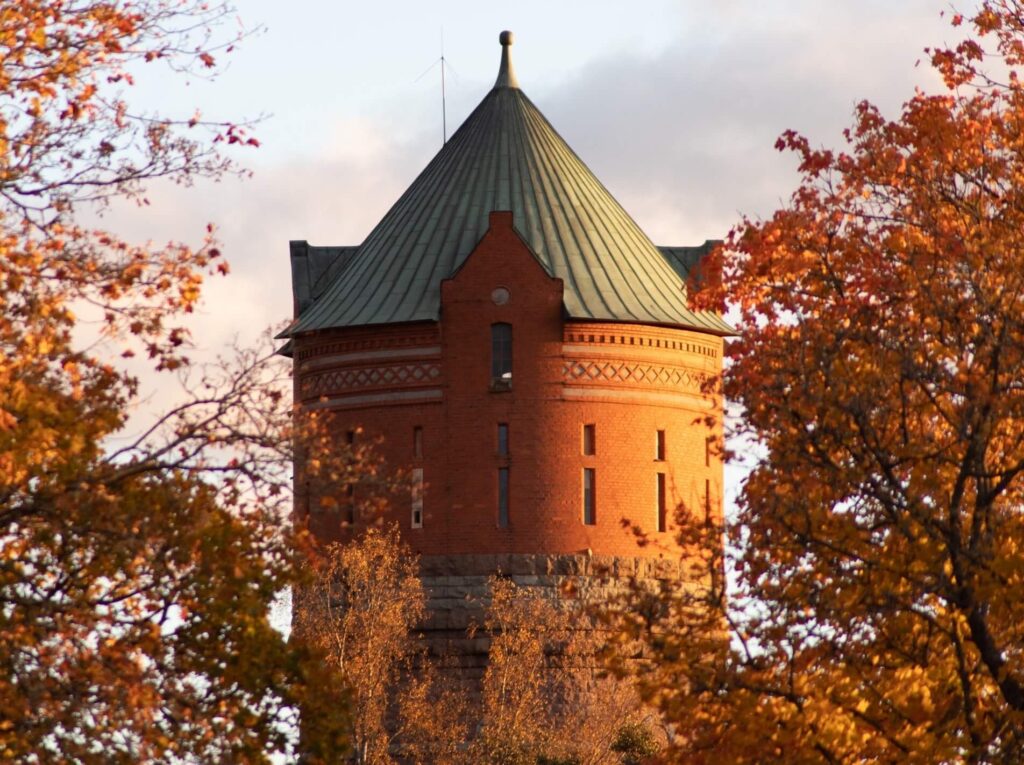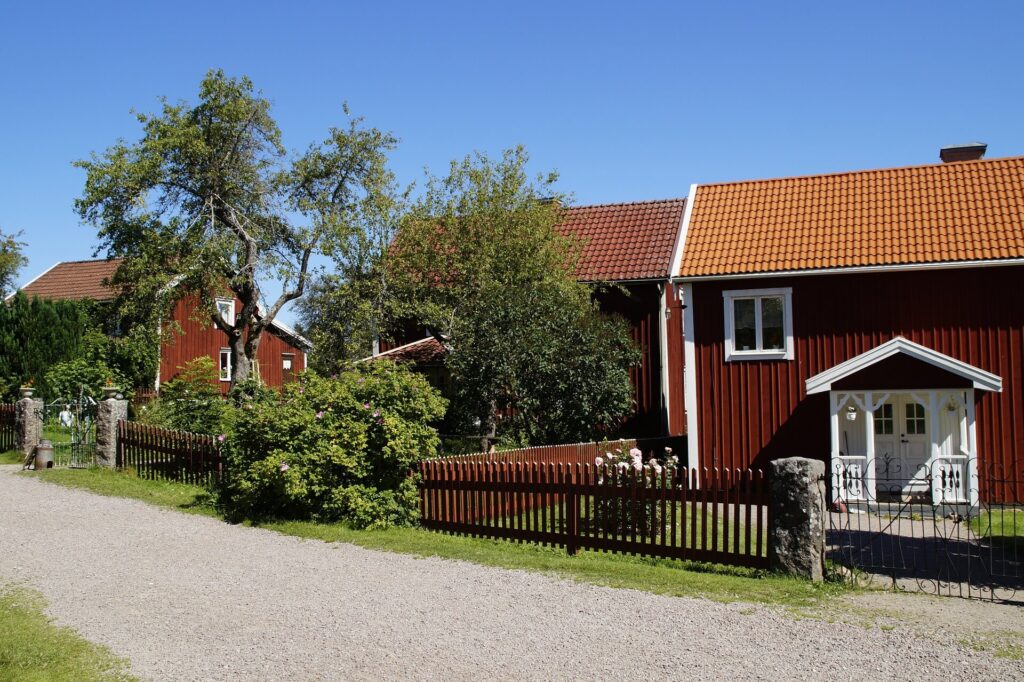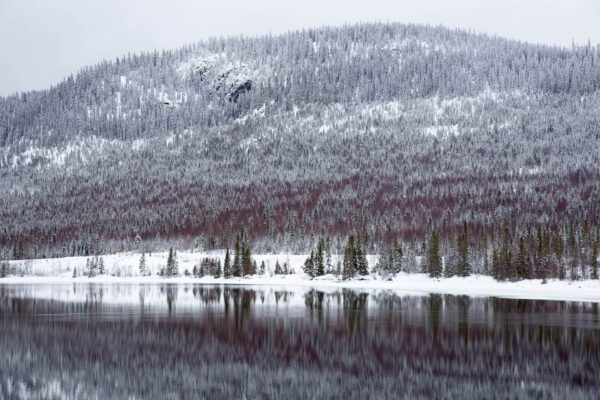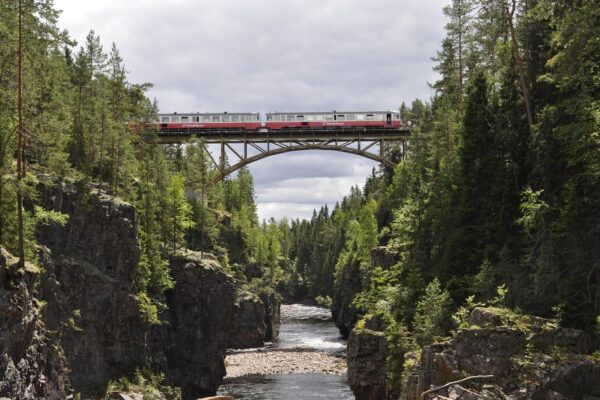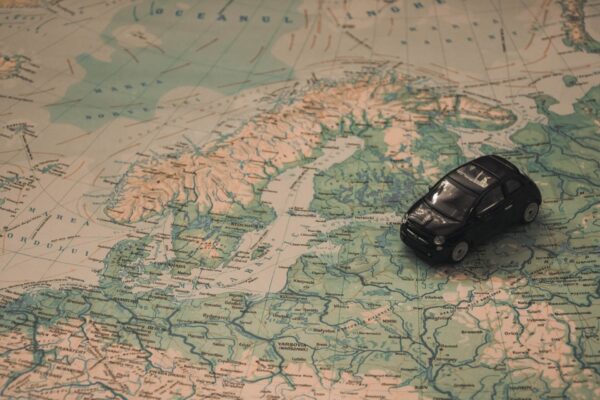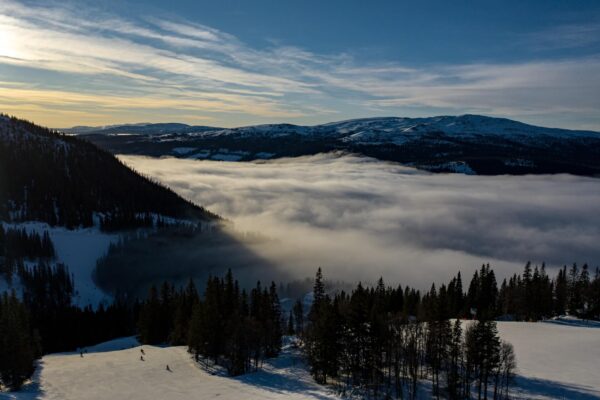Småland – translated as “small country” – is Sweden as many imagine it: Small red houses, modern design and, last but not least, endless nature with forests, lakes and beaches. Discover the southern region and enjoy its cosy ambience – whether in the countryside or in the historic towns.
Småland is the third largest region in Sweden and is located in the south of the country on the Baltic Sea. Its landscape is characterized by coniferous forests, lakes and moors. The name Småland goes back to the founding of the historic province, which is made up of several “small countries”.
| Part of the country | Götaland (Southern Sweden) |
|---|---|
| Area | 32,076 km² |
| Inhabitants | 754,600 |
Småland: Natural idyll in southern Sweden
When you think of Sweden, you probably immediately visualise images of green forests, meadows and lakes, dotted with small red wooden houses. If you want to experience the idyllic flair of Emil from Lönneberga or the Six Bullerby Children up close, Småland is the place for you.
The region not only offers numerous villages worth seeing, but also an impressive natural landscape. In the north-west, Småland borders Sweden’s second largest lake, Lake Vättern. And the Baltic Sea with the Tjust archipelago awaits you in Västervik. The region is also home to four national parks and countless nature reserves.
The largest lakes in the region are Bolmen and Åsnen. As they are particularly rich in fish, anglers will find ideal conditions here. There are numerous small, green islands in the lakes. Åsnen is home to one of the national parks, which impresses with its unspoilt and ancient landscape of forest and swamp.
With its typical Scandinavian terrain, Småland is particularly inviting for hiking. But the region also offers a variety of areas and trails for cycling, especially mountain biking. You can also explore the coast and lakes by kayak or canoe. In summer, you can even swim at some of the beaches in Småland. Or how about a relaxing boat trip on a historic steamboat sailing across the region’s lakes and canals?
Småland’s culture: modern design meets fairytale world
With so much unspoilt nature and the stories that go with it, Småland seems like an enchanted fairytale world. It’s not just Astrid Lindgren’s stories that you can experience up close here. The Ljungby Fairytale Museum fascinates the whole family with the infamous legends of Småland.
There is no shortage of cultural experiences, especially in the cities of Småland. In the historic centre of Kalmar, the Kalmar Union was founded in 1397 between Sweden, Denmark and Norway. Here you will find the impressive Kalmar Castle, an old fortress by the sea dating back to the 13th century. On a historical tour of Småland, you shouldn’t forget Eksjö, which is known for its wooden house architecture. The medieval old town centre is even under monumental protection.
The tour continues in Jönköping, which lies at the southern tip of Vättern. The city is one of the ten largest in Sweden and is home to a university and numerous museums. The cosy town of Växjö, in the heart of Småland, is also home to a university and the Smålands Museum.
In addition to nature and history, Småland is also known for innovation and Scandinavian design. The so-called “Glass Kingdom”, the centre for glass art, is located here. Since the 17th century, numerous glassblowing workshops have been established in the region. And why is the children’s paradise in IKEA actually called Småland? The small town of Älmhult in Småland is where the furniture giant opened its first shop. Today, the IKEA Museum is located here and the IKEA Hotel is opposite.
Tip: Visit Småland around the time of the traditional Midsummer Festival and experience the ceremonies and traditional food at the village festivals, for example in Västervik, Vimmberby or Åsens by.
In the footsteps of Astrid Lindgren
Whether to Bullerby or Lönneberga: in Småland you are very close to the heroes from the most famous children’s stories. Visit Astrid Lindgren’s world in her birthplace of Vimmerby. The theme park delights young and old with its open-air stages. Astrid Lindgren’s former childhood home is now a museum and can be visited.
For a real Småland feeling, between Vimmerby and Lönneberga you will find the village square of Sevedstorp with its red wooden houses – the location of the Bullerby films.
Regional Swedish cuisine in Småland
Småland is the region for regional Swedish cuisine with fresh ingredients such as berries, apples, herbs, mushrooms and fish. The best place to buy these is in the farmers’ farm shops or at the market.
Lingonberries, or lingon in Swedish, are the “red gold” of Småland and grow in the forests between August and September. Try them fresh from the bush, as juice or as jam (sylt) in combination with the typical cheesecake from the region (ostkaka). Other Småland specialities include isterband, a coarse sour and lightly smoked sausage, and polkagris, peppermint-flavoured sugar sticks from the town of Gränna.
